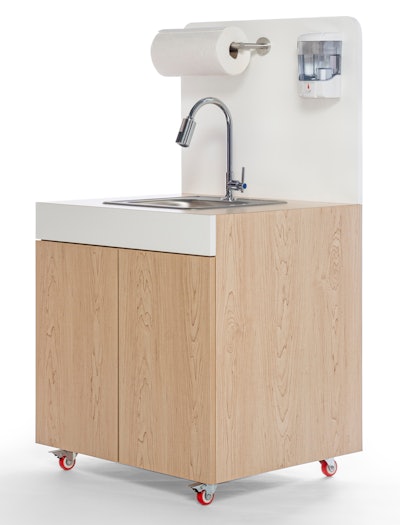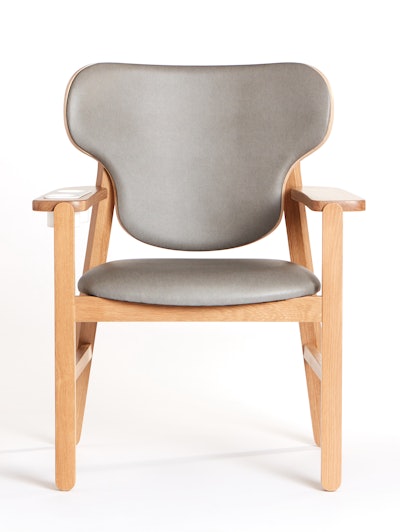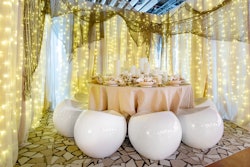
As event organizers continue prioritizing accessibility and inclusivity, there’s one important group of attendees that shouldn’t be overlooked: nursing mothers.
In fact, certain events can’t afford to overlook this group, due to the new U.S. PUMP for Nursing Mothers Act, which was signed into law in December and officially went into effect on April 28, 2023. The new act, an extension of 2010’s Break Time for Nursing Mothers law, requires employers to provide reasonable break time and a private, non-bathroom space for breastfeeding employees to pump during the workday.
Although this new initiative technically only applies to companies with more than 50 employees, Stephanie Boms—CEO and co-founder of Nessel, which provides wellness room furniture, breastfeeding pods, and portable lactation stations—advises conference organizers and event venue owners to familiarize themselves with the PUMP Act and focus on creating safe, comfortable spaces for attendees who may be breastfeeding.
“Managers of event spaces should understand the positive ROI of creating lactation spaces on event floors during conferences and conventions,” she says. “As companies become more attuned to creating inclusive workplaces and workforces, there will be increasing demand from prospective clients to provide a lactation space.”
For events that are likely to have nursing mothers in attendance, Boms shares five tips for creating a comfortable, inclusive lactation space.
1. Make it private.
“Currently, many conference spaces do not have designated, private lactation accommodations, leaving breastfeeding attendees to pump in semiprivate spaces such as bathrooms or break rooms,” Boms points out. “When those are unavailable or inconvenient locations, a pumping mother may even leave the conference to return to a hotel room, missing more of the program and networking opportunities.”
Boms suggests converting an existing room by outfitting it with the proper equipment and furniture, and making sure to cover windows and doorways for privacy. And, of course, make sure the room has a proper locking mechanism and/or occupancy indicator. “If no room is available in a close and convenient setting, a lactation pod is a great option,” she adds. “Lactation pods instantly create privacy and can be strategically placed in conference and event spaces.”
 "Access to wash pump parts and a sink to clean your hands is critical for staying clean and germ-free," says Boms, adding that Nessel offers portable sinks and hand-washing stations.Photo: Courtesy of Nessel
"Access to wash pump parts and a sink to clean your hands is critical for staying clean and germ-free," says Boms, adding that Nessel offers portable sinks and hand-washing stations.Photo: Courtesy of Nessel
Boms adds that being forced to pump in a less-than-ideal location often means nursing mothers won’t have a safe place to store their breast milk. “It can be cumbersome and may risk spilling if she must carry it with her in a small cooler,” she explains. “If there is no well-established lactation room, a pumping attendee may be sitting on chairs or benches not well designed for the function, leading to spilling milk or staining of clothes as it’s hard to set up a pump and stay in position well without the foundation support.” Her suggestion? Offer a safe, secure refrigerator in all lactation rooms.
3. Include a sink.
Another key component of a lactation room is a sink, where nursing mothers can wash their pump parts and their hands. “Have a sink readily available and used solely for the purposes of the lactation room,” she says. “Washing pump parts in public bathrooms may not feel clean or sanitary, as their cleanliness levels may vary significantly.”
 Nessel also offers comfortable chairs designed specifically for breastfeeding mothers, complete with solid legs and wide armrests.Photo: Courtesy of Nessel
Nessel also offers comfortable chairs designed specifically for breastfeeding mothers, complete with solid legs and wide armrests.Photo: Courtesy of Nessel
Boms advises conference organizers to consider how long breastfeeding mothers need to pump—typically 20 to 30 minutes per session, she notes—and include a comfortable chair in their lactation spaces. “They will benefit from a chair with solid legs (not a moving glider, which could cause the pump to move around during a session); a wide armrest to place pumps, water bottles, and laptops or work materials; and they should be able to be easily cleaned before and after a session,” she notes.
5. Make it easy to find.
Another tip? Don’t make nursing mothers travel a long distance to find the lactation room (thereby missing even more of the conference), or make it hard to find. “Providing solid communication and adding signage so individuals can easily find and access the room is important,” Boms says.
Overall, Boms believes that adding properly designed lactation rooms to events and conferences is a crucial way to make mothers feel comfortable and welcome—and thereby be more inclusive and appealing to a broader audience. “Not only will this attract more breastfeeding attendees, but it will also appeal to companies who wish to keep their conferences aligned with their core values related to hiring and retaining top female talent,” she says.



















